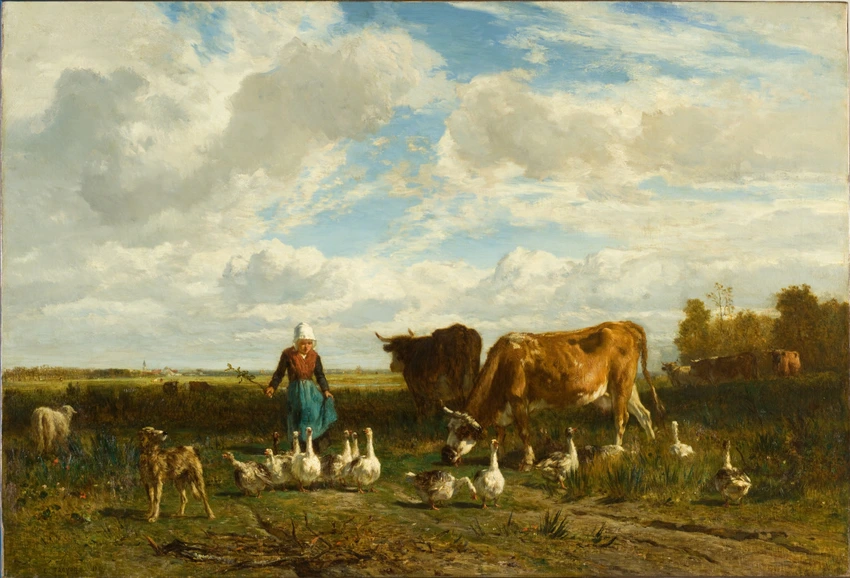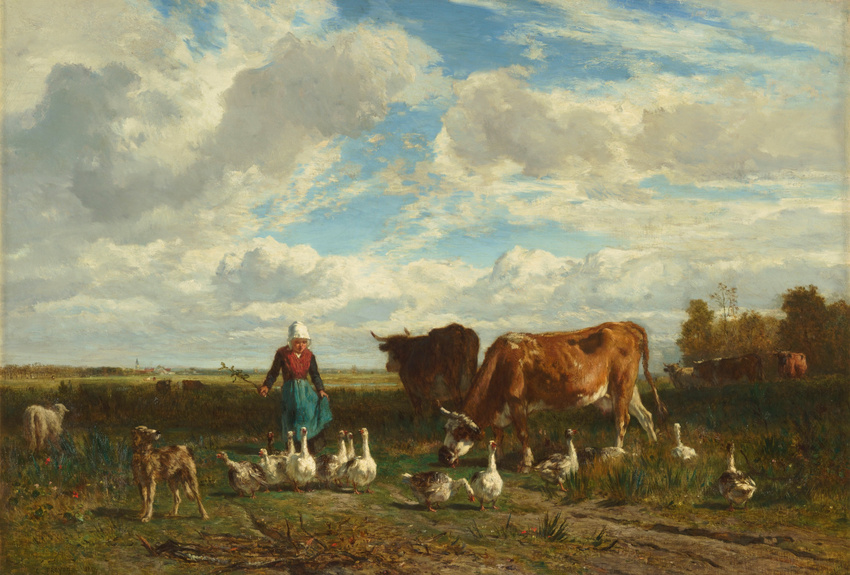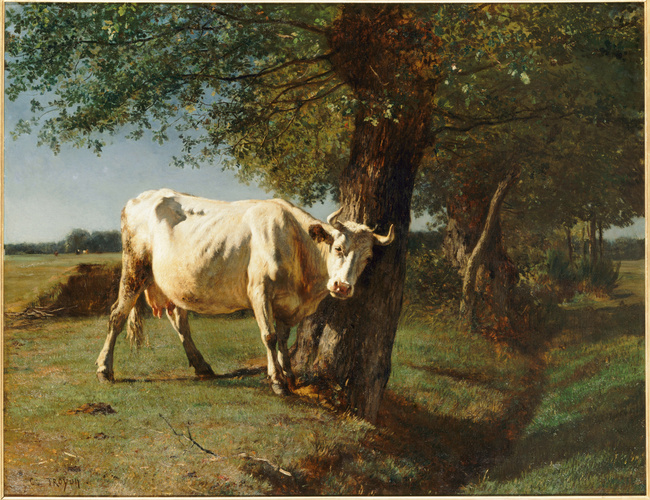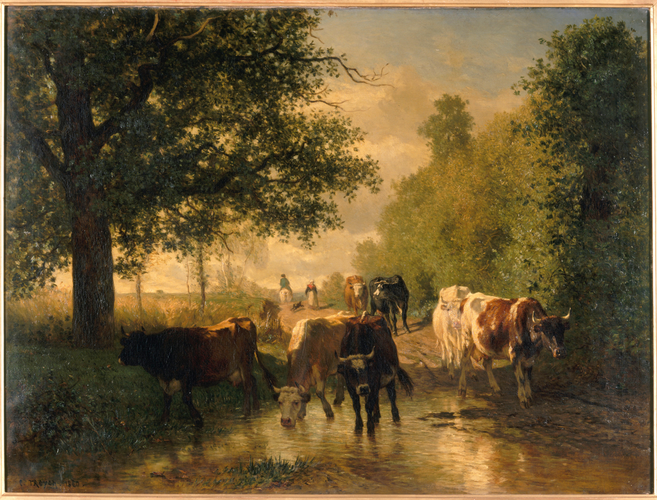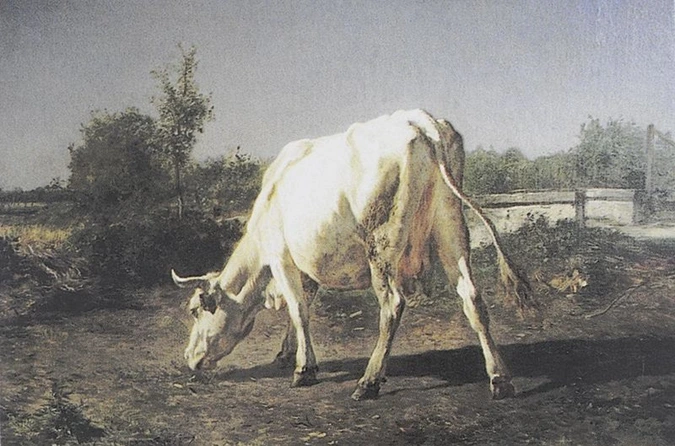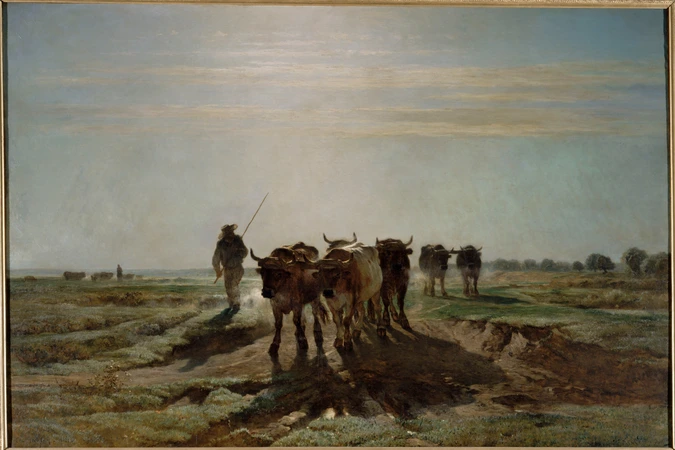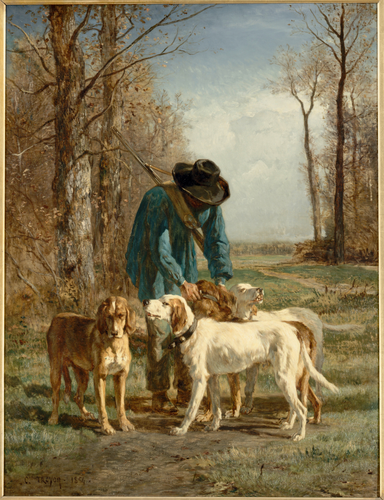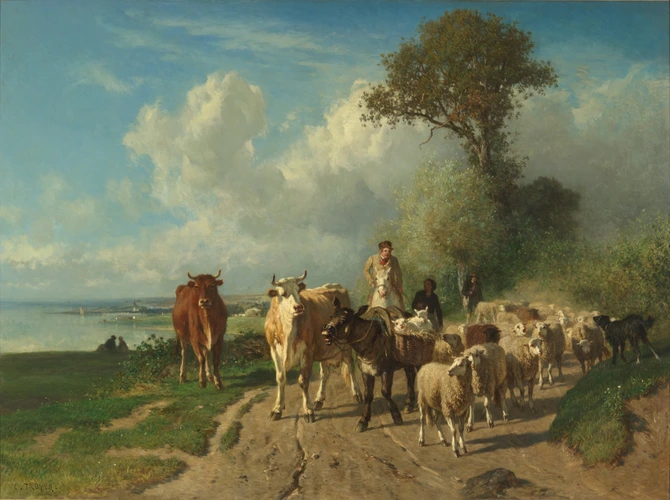Le Pâturage à la gardeuse d'oies
After travelling extensively in France, Holland and England, Troyon moved to Normandy around 1850, a region of pastures and livestock farming. There he observed the life of both peasants and animals.
Here, Troyon shows a goose girl leading her flock across a pasture. In the mid 19th century, the choice of a subject such as this was a real novelty. Until then, a scene like this, depicting a simple peasant girl and farm animals, would not have been considered worthy enough a subject for a painting.
The painting is wide with an almost panoramic view. The sky, hastily painted, occupies a large part of the canvas. The bulky presence of the cows in the foreground dwarfs the young goose girl, who looks barely as tall as they are. In the French countryside at this time, it was in fact the children who were given the task of looking after the often small number of animals, and of feeding the poultry. Troyon's Goose Girl is reminiscent of Millet's Woman Grazing her Cow (Bourg-en-Bresse, Musée de Brou), which he presented at the 1859 Salon. The subjects are similar, but whereas Millet paints the scene with unusual seriousness, Troyon, as if telling a story, tenderly depicts a small scene of rural life that he himself had witnessed, always finding a pretext to paint his beloved animals.
